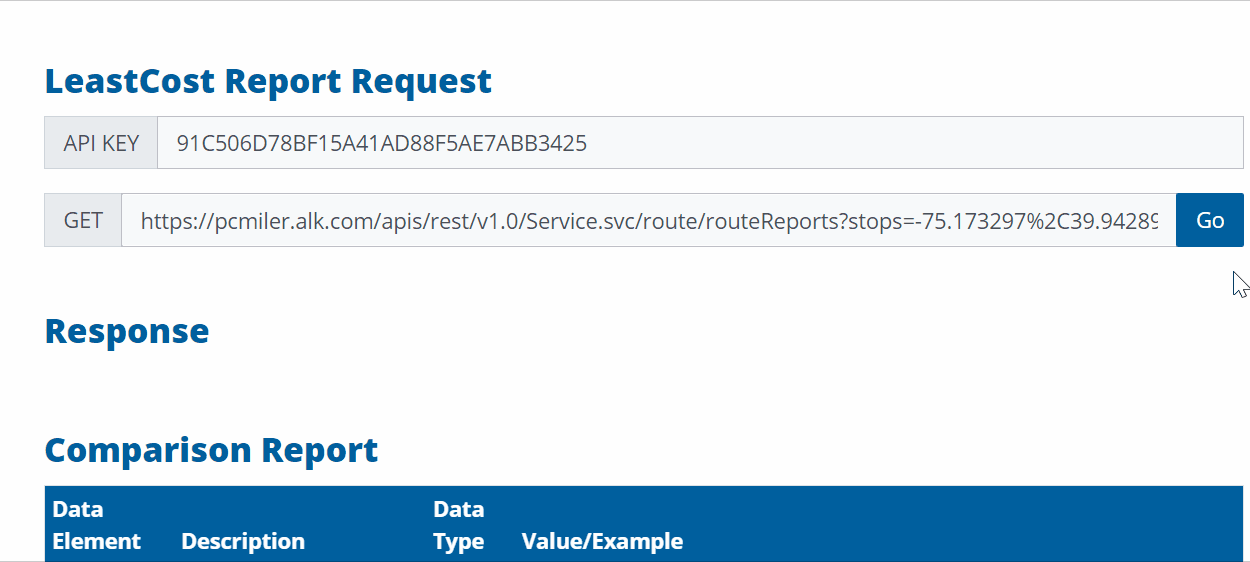Trip Costs
Contents
Understanding trip costs is an essential part of transportation planning. Our trip planning APIs give you the ability to calculate the cost of a trip by taking into account toll costs; labor, maintenance, and overhead costs; and fuel costs. This information can help you:
- Choose the most cost-efficient route
- Provide accurate customer quotes based on the actual costs of a trip
- Improve load and logistics planning
Trip costs are calculated for each leg of a route (stop to stop) as well as for the entire trip.
Which types of costs are considered in calculations?
There are two main types of costs:
-
Toll costs, which are based on toll data in the Trimble Maps database and the route path generated by the API.
-
Other trip costs, which include fuel costs, distance-based costs, time-based costs, and stop costs. These are based on parameter values that you assign and the route path generated by the API. (If you don’t assign values, default values are used.)
Toll costs
In North America and Europe, you can get a detailed toll cost report for the truck route generated by our Routing and Trip Management APIs.
-
North America toll costs can take into account the size of the vehicle, toll discount programs (such as EZPass), as well as time-based tolls when an arrival or departure time is entered for a route.
-
In Europe, with more than 220 toll providers in more than 40 countries, toll costs often depend on specific vehicle parameters and are provided in the individual country’s currency. Our platform supports all of this in a comprehensive toll report showing the toll cost per route segment in a single currency. Toll cost is a separate report to the other trip costs described below.
Fuel costs
The fuel cost for each trip is derived from the route path generated by the Routing API. It is based on the fuel units (gallons or liters), fuel cost per unit and distance per fuel unit (e.g. miles per gallon).
Other distance-based costs (e.g. maintenance)
Other distance-based costs, often referred to as maintenance costs, are calculated very similarly. You define a price per distance unit and the distance unit (e.g. miles or km). Based on the route path, the system will calculate the other distance cost.
Cost per hour (e.g. labor)
In addition to distance-based costs, there is usually a cost per hour associated with a trip. You can define a cost per hour and the system will calculate the time-based costs for a trip based on the total duration of the trip. Total duration takes the following time elements into consideration: drive time, dwell time (per stop), and Hours of Service (HOS) break times.
Cost per stop
For each stop you can define a dedicated cost per stop amount, which might cover things such as special equipment needed to load or unload at a stop. Each stop cost amount will be added to the other costs for the total trip cost.

How are loads taken into consideration?
For additional accuracy, you can define different cost values for “loaded” or “empty,” for each leg of a route (stop to stop) for fuel, maintenance and hourly costs. Cost per stop can be labeled “loaded” or “empty,” but only one value can be entered as “loaded” is the default.
How can trip costs be minimized?
(North America Only) The Routing APIs can generate a LeastCost Report, which provides a detailed comparison of the distance, time and costs associated with multiple possible routes between an origin and a destination.
Watch VideoThe possible routes are generated by using all nine combinations of:
-
Our three Route Types: Practical (the default type), Shortest, and Fastest. (Fastest routes are not recommended for trucks.)
-
Our three options for avoiding toll roads: Always Avoid, Avoid if Possible, and Use
You can then compare the trade-offs between time, distance and cost to choose which route type and toll settings work best for a particular trip. Those settings can then be plugged into our Directions or Route Path APIs, to get the actual path for the trip.

Share this article: